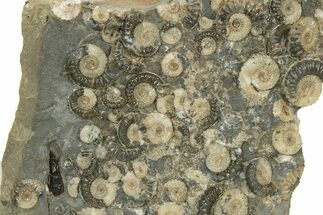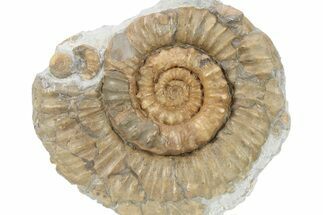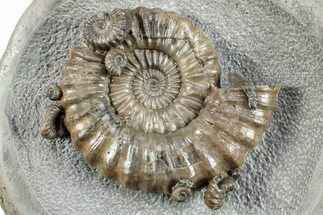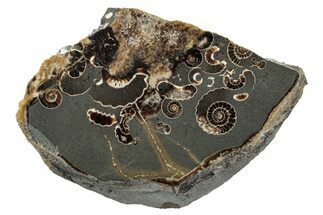This Specimen has been sold.
13.3" Fossil Ammonites With Petrified Drift Wood - Dorset, England
This is a gorgeous association of ammonite fossils and petrified wood within a concretion, collected from the Lyme Regis region of England. The largest ammonite Promicroceras planicosta) is 1.1" wide sits right at the center of the specimen. The petrified wood is just beneath the large cluster of ammonites and runs across the entire base of the specimen. One edge of the rock has been cut flat, facilitating aesthetic presentation of the fossils. A truly stunning specimen!
Ammonites were predatory cephalopod mollusks that resembled squids with spiral shells. They are more closely related to living octopuses, though their shells resemble that of nautilus species. True ammonites appeared in the fossil record about 240 million years ago during the Triassic Period. The last lineages disappeared 65 million years ago at the end of the Cretaceous.
Petrified wood is the name given to wood that has been turned into stone (fossilized) through the process of permineralization. In this process, all of the organic matter becomes replaced by minerals, while much of the original structure, such as tree rings, is retained. For this to happen, the wood needs to be buried in an environment low in oxygen to prevent decomposition and with flowing, mineral-laden water, so minerals may replace structures. The coloration is caused by various minerals that present in that water during fossilization. For example, red colors are due to iron compounds, greens due to copper, and so on.
SPECIES
Promicroceras planicosta & Unidentified Wood
LOCATION
Lyme Regis, Dorset, England
FORMATION
Lower Lias, Obtusum Zone
SIZE
Entire specimen 13.3 x 7.6"
CATEGORY
SUB CATEGORY
ITEM
#238079
We guarantee the authenticity of all of our
specimens. Read more about our
Authenticity Guarantee.
specimens. Read more about our
Authenticity Guarantee.
 Reviews
Reviews














